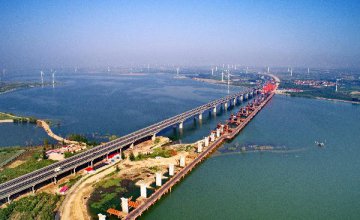
Narrowing interest margin of China's and the United States' national debt in recent days will not necessarily incur capital outflow from China, according to a report of China's Economic Daily on Monday.
Since early this year, interest margin of China's and the United States' national debt continue its narrowing trend.
In recent days, the one-year national debt of China and the United States have had an inversion for the first time in ten years. The interest margin of the ten-year debt of the two countries has also been maintained at a low record of around 30 basic points.
Some are worried that the inversion will incur further depreciation of RMB and sway the independence of China's monetary policy.
However, many experts said that the narrowing interest margin was brought about by different monetary policies of the two countries and could not act as a clue for the trend of China's capital market.
Ming Ming, chief analyst on constant return of CITIC Securities, said it only made sense in theory to conclude that the narrowing interest margin would bring about RMB depreciation.
"China has some unique features on the capital market that can block the linkage of interest rate and exchange rate. For example, China's capital items are not fully opened to the outside world, which will impede the influence of the interest rate on the exchange rate," said Ming Ming.
Meanwhile, the narrowing interest margin will not incur a large capital outflow from China, said the Economic Daily.
The report made a conclusion based on historical performance that there is no necessary link between the two.
"For example, during the two periods from 2002 to 2004 and from 2005 to 2007 respectively when the past inversions occurred, China had maintained a rapid growth in its foreign trade and foreign exchange reserve. Meanwhile, it was the same with China's GDP growth during the two periods," said the report.























Latest comments